Local citizen scientists map genetics of Darwin's Galapagos
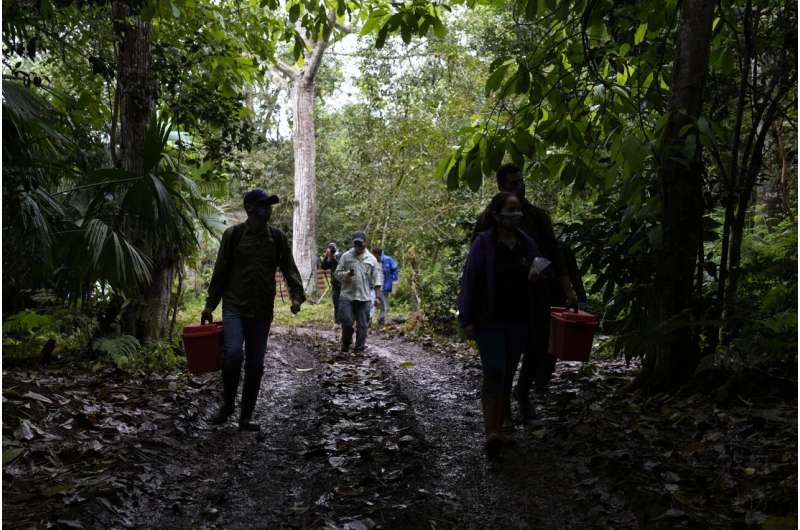
Five months into the pandemic, things were getting desperate for Robin Betancourt, The tourists he depended upon as a boat captain were unable to visit the Galapagos Islands, whose isolation—1,000 kilometers (600 miles) from the mainland—makes alternative employment hard to find.
It hit him hard when when he couldn't find a few cents for his 5-year-old daughter Zulyn to buy a pastry.
Then science stepped in.
Betancourt was one of 74 Galapagos residents hired and trained to sample the genetic diversity in the small island chain that famously inspired Charles Darwin in his description of evolution.
"The project was a salvation, but also a challenge," he said. "I only knew how to turn on the computer to play music; I didn't know how to operate the thing.."
"Now I'm part of a citizen science project. I'm a citizen scientist, look at that!" he said with a grin.
The Barcode Galapagos Project uses local people to gather, prepare and process tiny samples in DNA sequencing machines set up in three laboratories on the islands.
They search the soil and dip into the sea to collect samples left by the islands' plant and animal life, from large to microscopic.
The samples are run through the machines to determine short DNA sequences, producing barcode identifiers or fingerprints of thousands of species that can be compared with similar samples from elsewhere across the world.
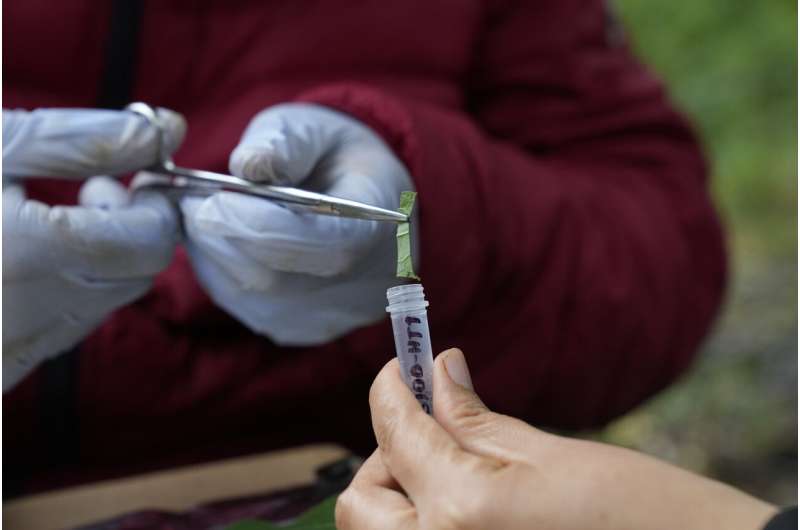
"We are making a genetic catalog of the biodiversity of the Galapagos. We want to obtain the genetic signature of the species of the Galapagos and quantify the variation of each one due to the geographical isolation in which they are found.," said Diego Ortiz, manager of the project.
So far, the Charles Darwin Scientific Station has registered 10.659 species—some endemic and others introduced—ranging from mammals to bonefish to snakes, fungi and plants, plankton and bacteria.
They've sampled waters as deep as 30 meters (100 feet) as well as dirt from inland regions that holds bits of hair, skin or other biological remnants of animals that have passed by.
The researchers said about 30% to 40% of the species they've found so far don't match any others in a global bank of gene sequences.
The project involves researchers from Ecuadur's University of San Francisco; the University of Exeter in England, the University of North Carolina at Chapel Hill and the Galapagos Science Center. Funding has come from U.K. Research and Innovation through the Global Challenges Research Fund and the Newton Fund.
-
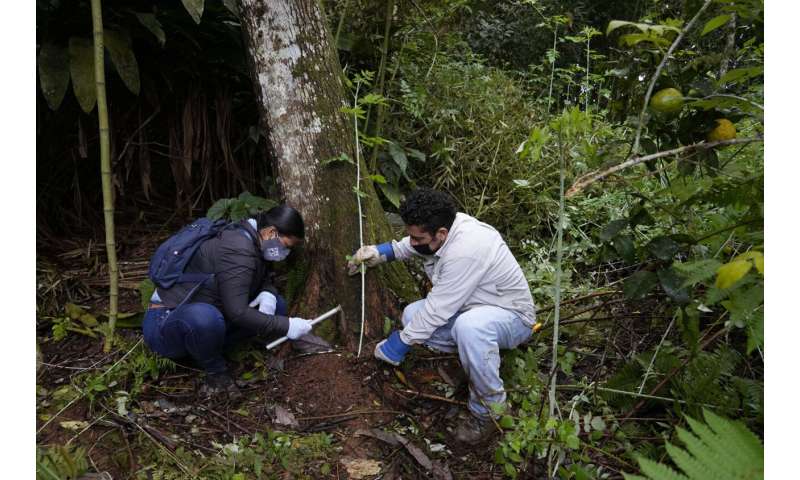
Farmer Sandra Simbana and tour guide Juan Garcia extract soil samples to be analyzed in a laboratory as they assist scientists in collecting plant samples to extract its DNA as part of the Barcode Galapagos project in the island of San Cristobal, Galapagos, Ecuador, Friday, Aug. 20, 2021. The samples collected by the Barcode Galapagos project workers are run through the machines to determine short DNA sequences, producing barcode identifiers or fingerprints of thousands of species that can be compared with similar samples from other locations across the world. Credit: AP Photo/Dolores Ochoa -
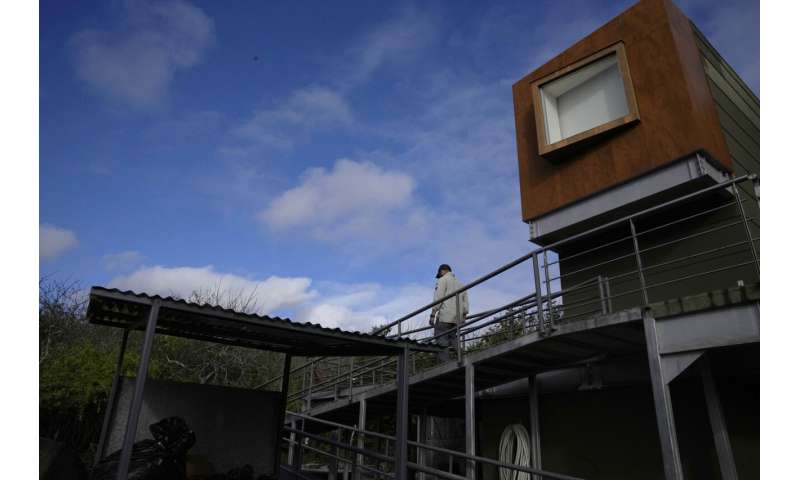
Diego Ortiz, a Barcode Galapagos project coordinator, walks at the Galapagos Science Center where its lab will process plant samples and extract its DNA to determine if they are endemic or imported, in the island of San Cristobal, Galapagos, Ecuador, Friday, Aug. 20, 2021. "We are making a genetic catalog of the biodiversity of the Galapagos. We want to obtain the genetic signature of the species of the Galapagos and quantify the variation of each one due to the geographical isolation in which they are found.," said Ortiz. Credit: AP Photo/Dolores Ochoa -
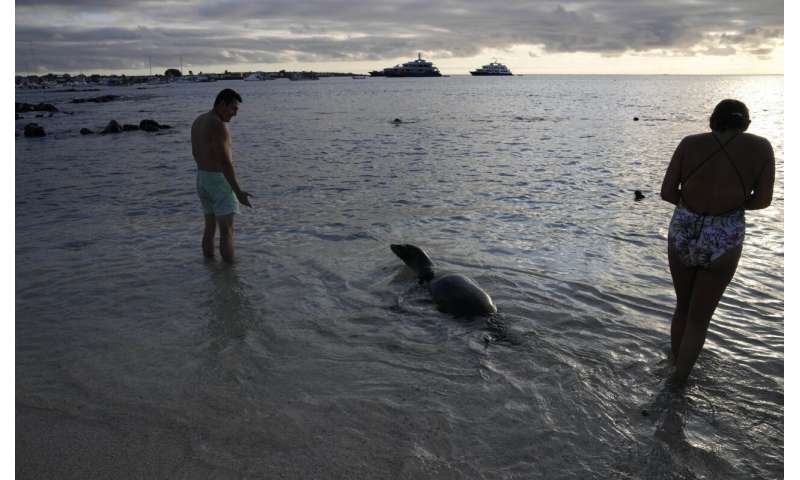
Tourists stand by a sea lion on Mann Beach on the island of San Cristobal, Galapagos, Ecuador, Friday, Aug. 20, 2021. As tourism income dwindled during the pandemic, a new project called Barcode Galapagos has turned dozens of local inhabitants into citizen scientists by training them to sample the genetic diversity. Credit: AP Photo/Dolores Ochoa -
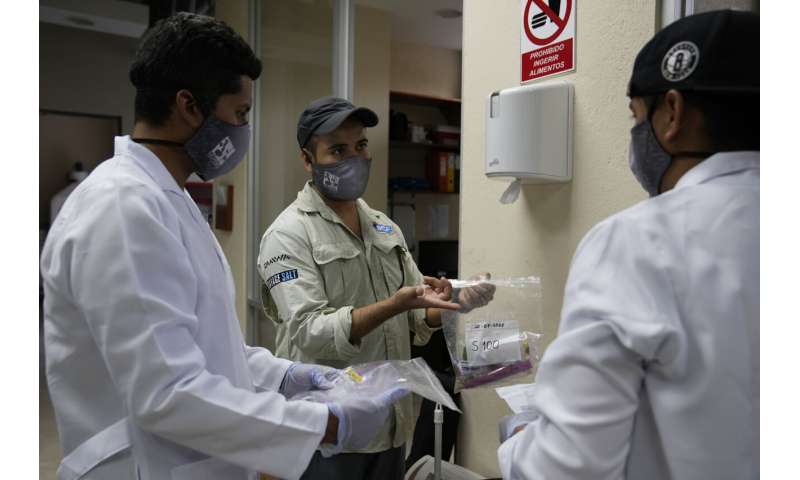
Scientist Diego Ortiz, a Barcode Galapagos project coordinator, center, instructs fisherman Manuel Chalen, left, and scuba instructor Oswaldo Ortiz, as they start the process of extracting DNA from plant samples collected by other locals, at the Galapagos Science Center in the island of San Cristobal on the Galapagos, Ecuador, Friday, Aug. 20, 2021. The samples collected by the Barcode Galapagos project workers are run through the machines to determine short DNA sequences, producing barcode identifiers or fingerprints of thousands of species that can be compared with similar samples from other locations across the world. Credit: AP Photo/Dolores Ochoa -
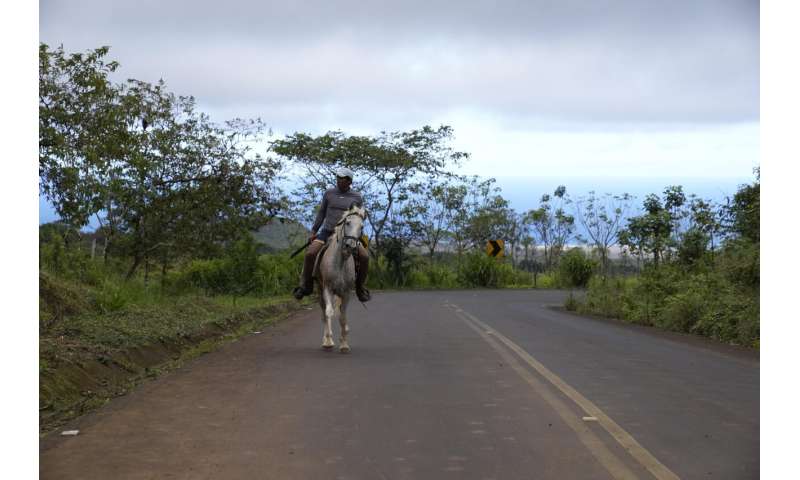
Juan Simbaña rides a horse near his farm in the island of San Cristobal, Galapagos, Ecuador, Friday, Aug. 20, 2021. Simbaña's sister is participating in the Barcode Galapagos project, which trains and pays locals to be "citizen scientists" in an effort to catalogue the genetic code of more plants, animals and microorganisms in the Galapagos. Credit: AP Photo/Dolores Ochoa -
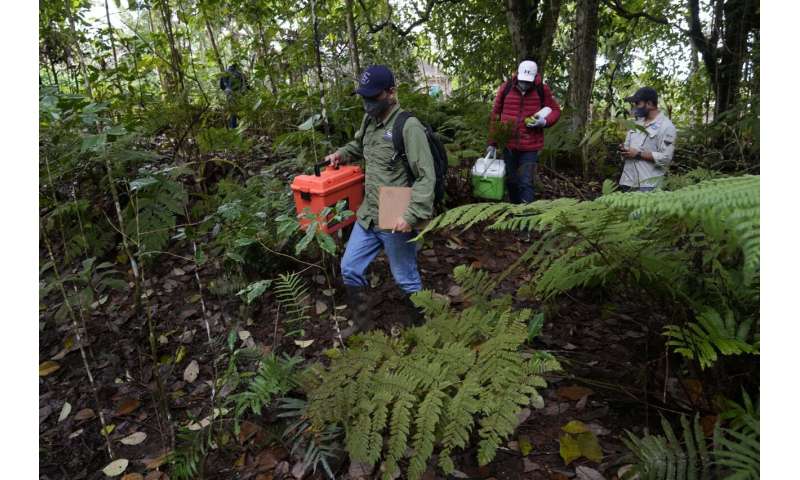
Scientists walk with locals as they collect plant samples to extract its DNA as part of the Barcode Galapagos project in the island of San Cristobal, Galapagos, Ecuador, Friday, Aug. 20, 2021. The project also involves researchers from San Francisco University in Ecuador; the University of Exeter in England, the University of North Carolina at Chapel Hill and the Galapagos Science Center. Credit: AP Photo/Dolores Ochoa -
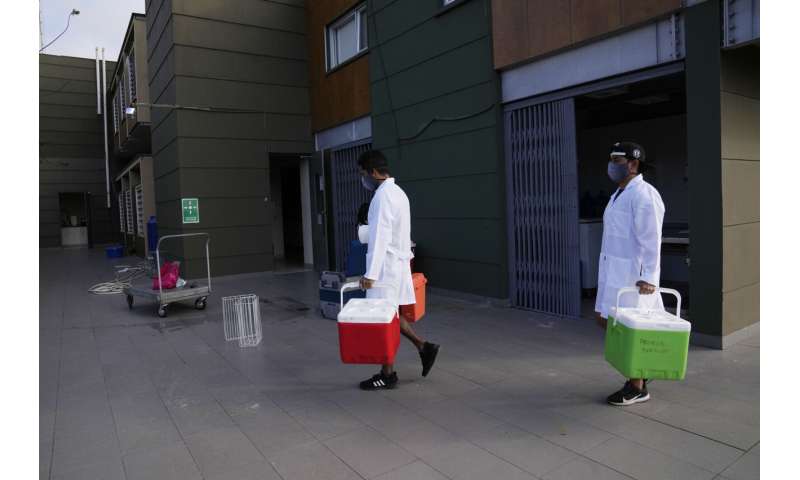
Fisherman Manuel Chalen, left, and scuba diving instructor Oswaldo Quiroz, of the Barcode Galapagos project, carry plant samples at the Galapagos Science Center where its lab will process the samples and extract its DNA to determine if they are endemic or imported, in the island of San Cristobal, Galapagos, Ecuador, Friday, Aug. 20, 2021. The Barcode Galapagos project is due to end in November, and by then, organizers hope to have a catalogue of information to help identify new species, fight illegal trafficking and control the entry of invasive species. Credit: AP Photo/Dolores Ochoa -
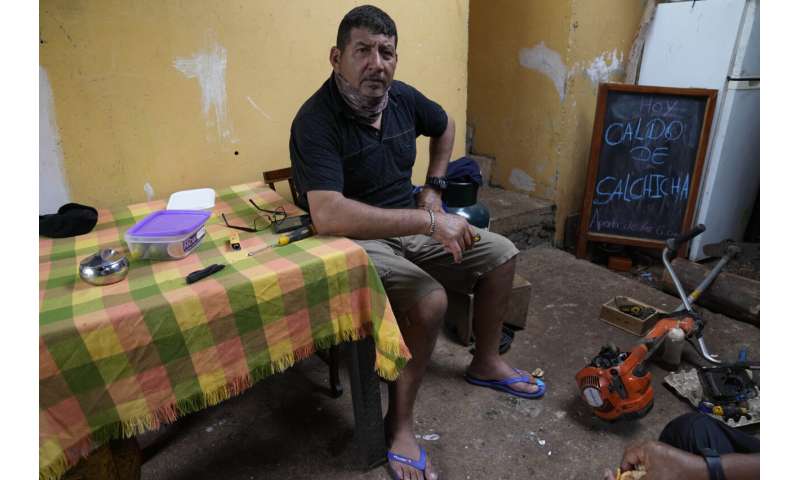
Former boat captain Robin Betancourt poses for a portrait on the front porch of his home in the island of San Cristobal, Galapagos, Ecuador, Saturday, Aug. 21, 2021. Amid the COVID-19 pandemic, tourism dried up and Betancourt was unable to earn a living, but he was hired and trained to take part in the Barcode Galapagos project to sample the genetic diversity in the island chain, throwing him a lifeline. Credit: AP Photo/Dolores Ochoa -
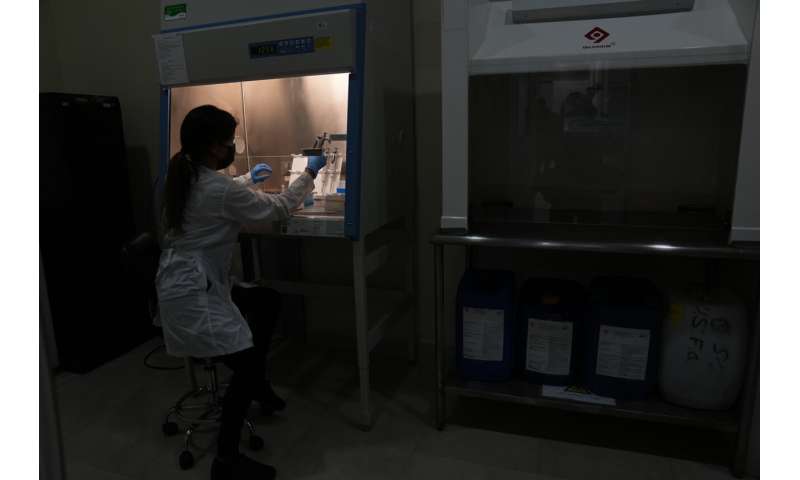
Tour guide Karen Ascencio extracts DNA from plant samples at the Galapagos Science Center as part of the Barcode Galapagos project in the island of San Cristobal, Galapagos, Ecuador, Friday, Aug. 20, 2021. The Barcode Galapagos project trains and pays locals to be "citizen scientists" in an effort to catalogue the genetic code of more plants, animals and microorganisms in the Galapagos. Credit: AP Photo/Dolores Ochoa
UKRI said it's one of several projects meant to "mitigate the short- and long-term social, economic and health consequences" of the COVID-19 pandemic.
"This is the first science project in the Galapagos that has been done with Galapagos citizens, which we have always wanted to participate in, but hadn't been given the opportunity," said Jhosellyn Aguas, a 35-year-old naturalist and guide. "I'm happy to be doing science."
The project is scheduled to end, however, in November. By then, organizers hope to have a catalogue of information to help identify new species, fight illegal trafficking and control the entry of invasive species.
© 2021 The Associated Press. All rights reserved. This material may not be published, broadcast, rewritten or redistributed without permission.



















